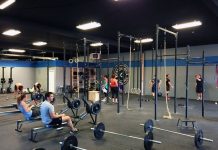Introduction
Bathroom fittings play a crucial role in the overall design and functionality of a bathroom space. Beyond their utilitarian purpose, these fittings serve as essential elements that bring together form and function, transforming an ordinary bathroom into a luxurious sanctuary. From faucets to shower fixtures, toilets to vanity units, each fitting contributes to the aesthetics and efficiency of the bathroom environment.
The Importance of Bathroom Fittings
Bathroom fittings are not mere accessories but integral components that define the character and ambiance of a bathroom. They are essential for ensuring convenience, comfort, and hygiene within the space.
Imagine a bathroom without proper fittings – the lack of functional taps or a functional toilet would render the room almost unusable. Thus, choosing the right fittings is paramount in creating a harmonious and efficient bathroom.
Enhancing Functionality and Aesthetics
Functionality and aesthetics go hand in hand when it comes to selecting bathroom fittings. While functionality ensures that each fitting serves its purpose effectively, aesthetics elevate the visual appeal of the space. Well-designed fittings not only enhance usability but also contribute to creating a cohesive design scheme within the bathroom.
In essence, bathroom fittings are like pieces of an intricate puzzle that come together to form a beautiful picture – one where comfort meets elegance, functionality meets style. By carefully selecting and integrating these essential elements into your bathroom design, you can elevate your daily routine while basking in the luxury of a thoughtfully curated space.
Faucets and Taps
One of the most crucial elements in any bathroom is the faucet or tap. These fixtures not only provide water for essential tasks but also contribute significantly to the overall aesthetic appeal of the space. When it comes to faucets and taps, there are various types to choose from, including mixer taps, pillar taps, and wall-mounted taps.
Mixer taps are popular for their versatility in controlling water temperature and flow rates with a single handle. On the other hand, pillar taps offer a classic look and individual hot and cold water controls.
Wall-mounted taps are sleek options that save counter space and create a modern vibe in the bathroom. Materials used in faucets and taps play a crucial role in their durability and appearance.
Common materials include brass, stainless steel, and chrome. Brass faucets are known for their durability and resistance to corrosion, making them ideal for long-term use.
Stainless steel offers a contemporary look while being easy to clean and maintain. Chrome finishes provide a shiny aesthetic that complements various bathroom styles while being resistant to tarnishing.
When it comes to styles, faucets and taps come in various designs to suit different preferences. Modern styles feature clean lines and minimalist designs that enhance contemporary bathrooms.
Traditional styles offer intricate details like ornate handles or vintage-inspired shapes for a more classic look. Waterfall faucets create a luxurious spa-like experience with cascading water flow that adds elegance to any bathroom.
Shower Fixtures
Showering is an essential part of daily hygiene rituals, making shower fixtures key components of any bathroom space. Showerheads come in different types to cater to individual preferences – rain showers for a gentle downpour experience, handheld showerheads for flexibility in directing water flow, and dual showerheads for added luxury with multiple spray settings. In addition to showerheads, shower valves are critical components that control water temperature regulation and pressure balancing within the shower system.
Thermostatic valves maintain consistent water temperature by blending hot and cold water supplies accurately. Pressure-balancing valves adjust the pressure of hot or cold water streams to prevent sudden temperature fluctuations during usage.
Toilets & Bidets
Toilets are essential fixtures in every bathroom, with various types available based on design preferences and space constraints. One-piece toilets feature seamless construction with integrated tanks connected directly to bowls for easy cleaning maintenance. Two-piece toilets consist of separate tank-and-bowl units joined during installation; they offer flexibility in design choices with interchangeable parts.
Wall-hung toilets save floor space by mounting directly on walls; these modern options provide sleek aesthetics while offering ease of cleaning underneath. Bidet attachments have gained popularity as add-on features enhancing personal hygiene alongside traditional toilet functions.
Standalone bidets offer dedicated washing facilities with separate fixtures; these European-inspired pieces promote thorough cleanliness. Bidet toilet seats integrate bidet functionalities into standard toilet seats; these innovative solutions provide convenience without requiring additional plumbing installations.
Bathtubs and Whirlpools
Types of Bathtubs
When it comes to bathtubs, there are several types to choose from based on design and functionality. Freestanding tubs are a popular choice for those seeking a luxurious, spa-like experience in their bathrooms. These standalone tubs come in various shapes and sizes, adding a touch of elegance to any bathroom.
Alcove tubs, on the other hand, are designed to fit into three walls, making them ideal for smaller bathrooms or spaces where maximizing floor area is crucial. Corner tubs are another option that utilizes the corner space efficiently while providing a unique bathing experience.
Materials Used in Bathtub Construction
The materials used in constructing bathtubs play a significant role in their durability and aesthetics. Acrylic is a lightweight and affordable option that retains heat well, offering a comfortable bathing experience.
Cast iron bathtubs provide a classic look and exceptional durability due to their heavy construction but may require additional support due to their weight. Fiberglass-reinforced resin bathtubs combine the strength of fiberglass with the beauty of resin, resulting in lightweight yet sturdy tubs that can be molded into various shapes and styles.
Vanity Units and Sinks
Types of Sinks
Sinks are essential components of vanity units that come in different styles to complement various bathroom designs. Undermount sinks create a seamless look by mounting beneath the countertop for easy cleaning and maintenance.
Vessel sinks sit above the counter, adding a distinct visual appeal with their raised profile and unique shapes. Pedestal sinks feature a stand-alone design that showcases elegance while saving floor space—an ideal choice for smaller bathrooms or powder rooms.
Materials for Vanity Units
The materials used for vanity units can impact both their appearance and longevity. Wood vanities with marble tops exude sophistication and luxury while providing ample storage space for toiletries and essentials. The combination of wood’s warmth with marble’s timeless beauty creates an inviting focal point in any bathroom.
Alternatively, glass vanities with ceramic tops offer a modern aesthetic with sleek lines and easy-to-clean surfaces. The transparent quality of glass adds an airy feel to the space while ceramic provides durability against moisture damage.
Hidden Technology in Bathroom Fittings:
When it comes to bathroom fittings, there is a world of hidden technology that can elevate your daily routine. Smart faucets with touchless sensors not only add a touch of modernity to your bathroom but also play a crucial role in water conservation. These innovative faucets are designed to only turn on when they sense movement, reducing water wastage significantly.
By incorporating smart faucets into your bathroom design, you not only add convenience but also contribute to sustainability efforts. Another remarkable technological advancement in bathroom fittings is the integration of LED-lit mirrors with defogging features.
These mirrors not only provide enhanced visibility during your grooming routine but also eliminate the nuisance of fogging up after a hot shower. The LED lighting adds a touch of sophistication to the space while the defogging feature ensures that you always have a clear reflection, making your morning rituals seamless and enjoyable.
Environmentally Friendly Options:
In today’s world, where sustainability is paramount, opting for environmentally friendly bathroom fittings can make a significant impact. Low-flow showerheads and faucets are among the top choices for eco-conscious individuals looking to reduce their water usage without compromising on performance. These fixtures are designed to restrict water flow while maintaining adequate pressure, resulting in substantial water savings over time.
By choosing low-flow showerheads and faucets for your bathroom, you not only contribute towards conserving precious water resources but also lower your utility bills. With advancements in technology, environmentally friendly options are now more efficient and aesthetically pleasing than ever before, allowing you to create a sustainable yet stylish bathroom space that aligns with your values.
Conclusion:
The world of essential bathroom fittings goes far beyond mere functionality; it encompasses innovation, sustainability, and aesthetics. From hidden technologies like smart faucets and LED-lit mirrors to environmentally friendly options such as low-flow showerheads, each aspect plays a vital role in shaping our daily rituals and environmental impact positively.
By embracing these advancements in bathroom fittings, we not only elevate our personal spaces but also contribute towards creating a more sustainable future for generations to come. Let these small yet impactful details inspire you to transform your bathroom into a sanctuary that embodies efficiency and elegance.










